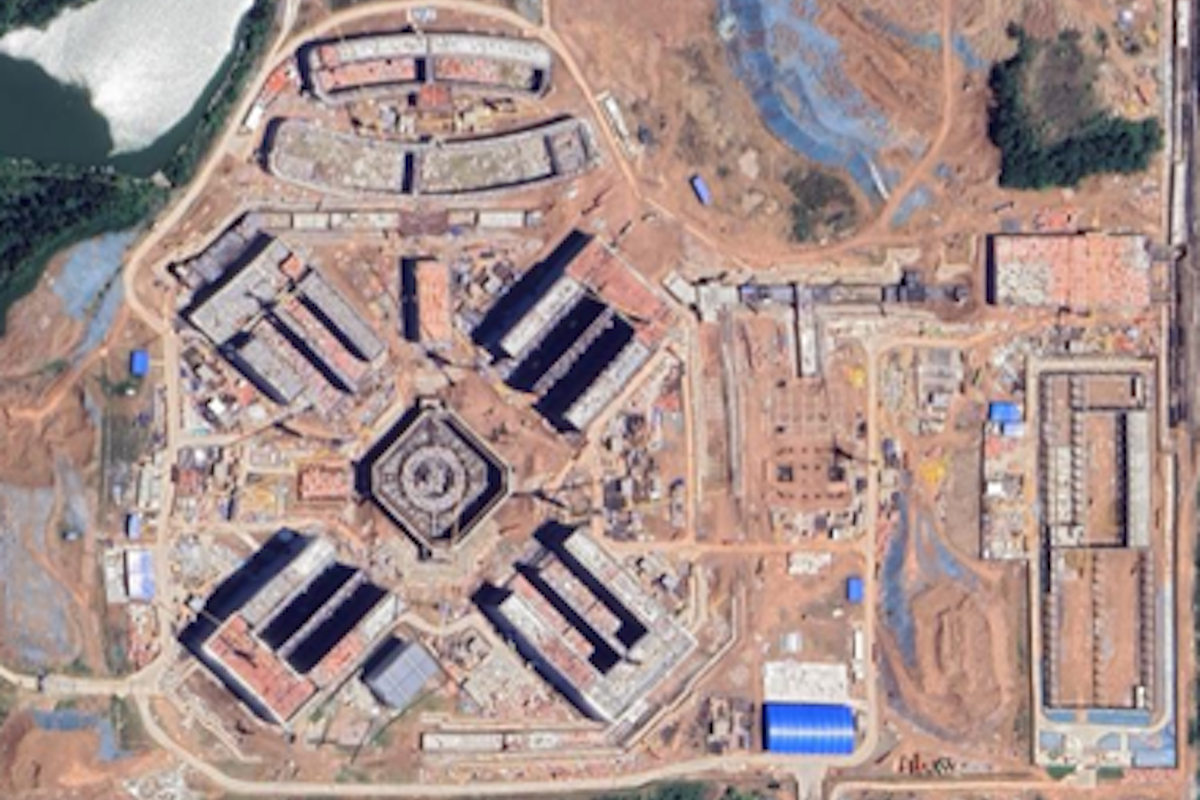
China is advancing in the development of new laser technologies for nuclear fusion, with the construction of an installation considered one of the most powerful in the world.
Recently, satellite images of a large laser installation in southwest China generated attention in the international press.
However, the reality about the project does not exactly correspond to the idea of a secret discovery, as initially suggested.
Currently, the main players in laser fusion technology include the United States, France and China. China already operates the third most powerful laser in the world, the Shenguang-III, located near the city of Mianyang in Sichuan province.
Inaugurated in 2015, Shenguang-III was considered a major technological landmark in the country, being revered as one of China’s largest achievements in terms of energy research.
However, even before the Shenguang-III operation, the planning of an even more ambitious installation, Shenguang-IV, was already underway. Shenguang-IV is designed to achieve fusion ignition, an essential goal for the future of nuclear energy technologies.
The design of this installation, which has generated speculation based on the satellite images released, was started in Mianyang and was expected to be completed after 2020. It is expected that the system will use up to 228 laser beams, with a total pulse energy varying between 1.5 to 2 megajoules.
Shenguang-IV is designed to rival the largest existing laser melting system today, the US National Ignition (NIF).
The latter, whose construction was completed in 2009, was the largest laser fusion installation in the world for many years, but is becoming obsolete with the development of new technologies.
Shenguang-IV could overcome the NIF by taking advantage of technological advances that were not available when the NIF was designed and built.
Shenguang laser facilities are located in Mianyang, a city that is also an important center for research and development of advanced nuclear weapons and technologies, including directed energy weapons.
Mianyang is associated with the development of nuclear weapons and, more recently, with the development of technologies such as the JF-12 hypersonic wind tunnel, one of the most powerful in the world.
Shenguang facilities are part of the Chinese Academy of Physical Engineering (CAEP), a strategic institution for China, responsible for nuclear research and the development of weapons since its foundation in 1958.
CAEP played an essential role in China’s military and nuclear development strategy, which became known for the expression “two bombs, a satellite” (two nuclear bombs and one satellite).
Laser fusion, although also civil applications, has always had a close connection with military interests, particularly in the development of nuclear weapons.
Laser fusion technology allows the investigation of nuclear processes and simulation of laboratory nuclear explosions without violating the full prohibition of nuclear testing, signed by countries such as the United States and China.
In addition, laser fusion can have practical applications in the development of a functional fusion power plant, a goal that China is looking for hard.
China’s interest in laser-fusion also extends to other forms of inertial confinement fusion, such as the Z-FFR fusion hybrid reactor project, led by CAEP researcher Peng Xianjue. The Z-FFR uses the Z-Pinch method, which uses electricity to compress and ignite fusion fuel, generating energy from fission reactions.
This hybrid system can generate large amounts of energy more controlled, operating more efficiently than traditional fusion systems.
In 2021, the Chinese government approved the construction of the world’s most powerful Z-Pinch at Sichuan Province Composition Science Center on Xinglong Lake. The construction of this device is underway, according to reports, and may represent a new phase in the development of fusion technologies in China.
The growing attention generated by the construction of large laser facilities in Mianyang reflects the growing global interest in nuclear fusion capabilities for both energy and military purposes.
Although the United States, France and other countries are investing heavily in similar technologies, China has been excelled with its ambitious laser melting facilities and hybrid reactor projects. With Shenguang-IV, the country can become a global laser-melting leader, surpassing existing systems in terms of capacity and efficiency.
Despite the obvious military implications of laser melting research, developed technologies also have great potential to contribute to the search for clean and sustainable energy sources.
Nuclear fusion, which could provide energy without emissions associated with fossil fuels, is one of the most promising research areas for the global energy future.
China, with its facilities in Mianyang and other fusion projects, continues to position itself as a growing power in this field.
With information from Asia Times
Source: https://www.ocafezinho.com/2025/02/18/china-avanca-em-tecnologia-de-laser-para-fusoes-nucleares/

